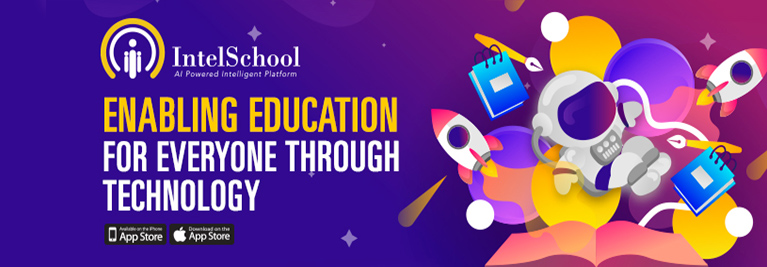IntelSchool is enabling education through Technology that advances the relationship between educational institutions, the parents and the students. With constructive collaboration, we can reinvent education to provide long-lasting learning experiences while addressing accessibility gaps and meeting the needs of the learner. Today, education seems stagnant and still ridden with traditional learning systems that are seldom effective in tapping the creativity of every student. It is time that teaching institutions woke up and smelt the coffee. They should start acting as incubators of innovation and exploration where students can acquire new skills while seeking knowledge.
To provide authentic learning experiences, educators should use the right kind of tools and support, to fully realize the benefits of technology in the field of education. Furthermore, stakeholders should commit to effectively practice the use of technology to improve education and learning, on the whole.
Blended Learning Environments
Incorporating both faces to face as well as technological learning opportunities is an ideal way to approach education. Diverse learning styles can be inculcated into students that would otherwise not be possible in a conventional classroom. The difficulty of the distance between the educational institution and the student can also be filled, when education in its most linear form, reaches remote areas where students can benefit from connected learning systems.
Involvement And Interactivity
At a certain point, formal education comes to an end. But technology offers education beyond age boundaries. Individuals from disparate backgrounds can come together with a specialized focus on appropriate pedagogy along with convenience in availability. Reputable institutions can enable smart technology so that students can engage proactively and access content from anywhere across the globe and get accredited from renowned institutes. Education thus can be more inclusive and interactive.
Smart Education
The concept of learning through technology increases participation even from smaller cities and areas as learning traverses through all sections of society. Knowledge seekers are extolling virtual integrated learning as the bridge between quality education and potential learners.
Empowering Teachers To Provide Personalized Instructions
When the complexity of distance is tackled with the help of technology, high-quality content can be easily delivered and teachers can devote more time towards innovative instructional strategies, and experiences while performing targeted interventions. Even if the institution is unable to secure a faculty member that possesses the appropriate skills, primarily due to lack of budget, the same tutorial can be provided with the help of an online course, which is equally comprehensive or through virtual long-distance teaching methods.
Robust connectivity can be highly interactive when it offers virtual science, math and language labs. Additionally, students can render their works to a global audience thus gaining appropriate recognition.
Reaching Out To Students In Remote Areas
The scale of need can be easily addressed with technology as students across the globe can benefit from personalized and even customized teaching and learning modules. At a relatively low cost, and with broadband, cellular and Smartphone coverage are becoming ubiquitous and affordable, virtual learning courses can reach low-income communities and groups, thus increasing learning capacities. The smart school software can reach the most important part of a classroom and given the choice of courses, teachers, and mentors, students just have to pick their relevant course and their teacher along with it, to complete their learning. Thus, a more accessible, personalized and creative learning experience is developed that is more of a means to an end.
Using Technology As An Enabler
Technology is empowering and acts as an enabler to a wider knowledge base. And since we are living in a knowledge-oriented society, technology can address the challenges of education by creating more open sources for better learning. While the current conventional education system does not necessarily provide avenues for creativity, technology can do the needful by changing the dynamics and bridging the distance between education and the student’s doorstep. Even outside the classroom students are engaging in technology and therefore, would, otherwise prefer an interactive learning session through technological availabilities. As far as post-secondary education and professional jobs are concerned, there is a greater demand for a skill-based practical education that will not subject students to rote learning. Rather these digital native students are presented with a technology-friendly way of learning since it is now an integral part of their lives. They don’t just acquire multi-tasking skills, they develop interest and start gathering knowledge, which then, becomes a continuous process rather than an end.
Connect with IntelSchool Smart School Management Systems, to find innovative ways of imparting education to those who need it.



